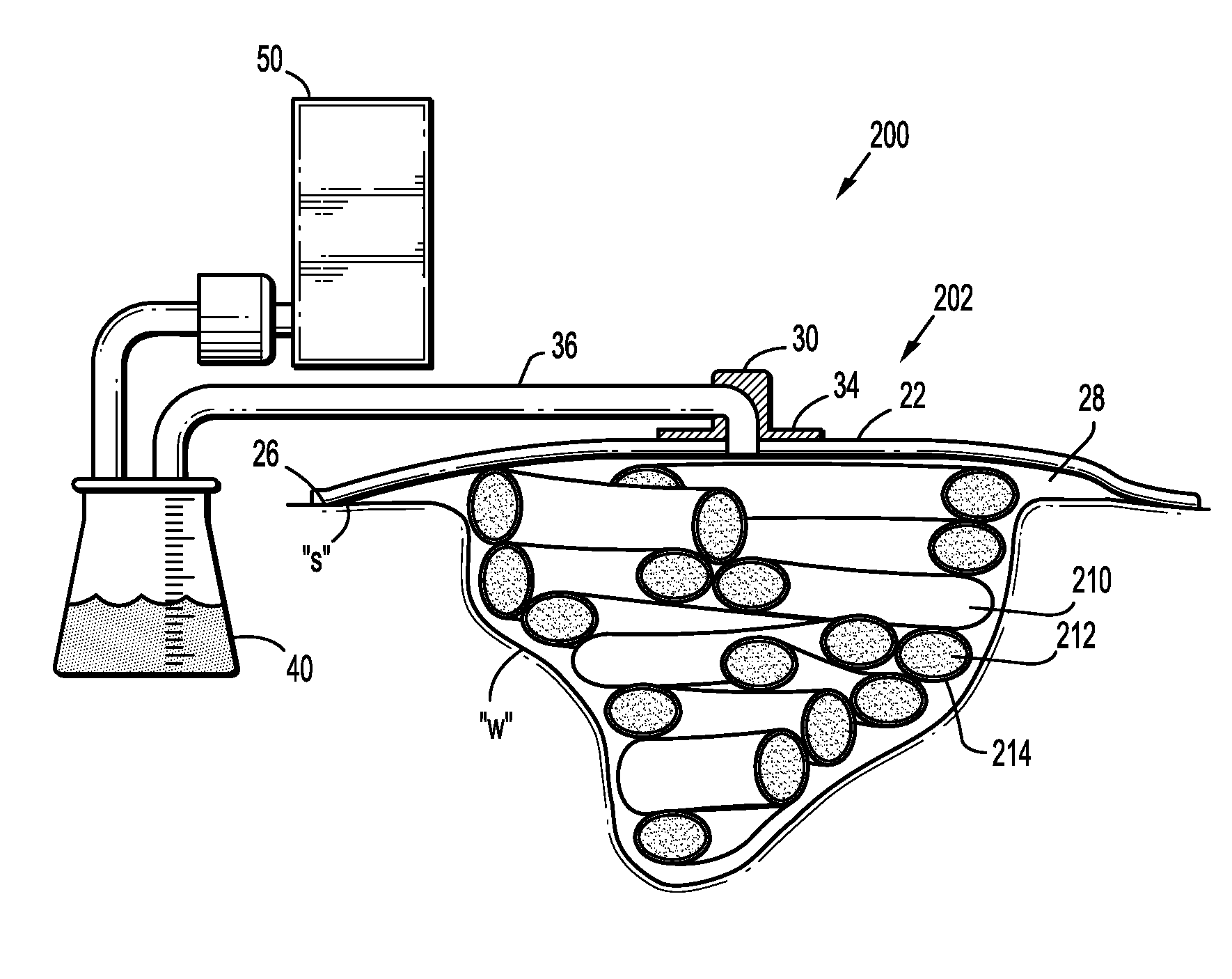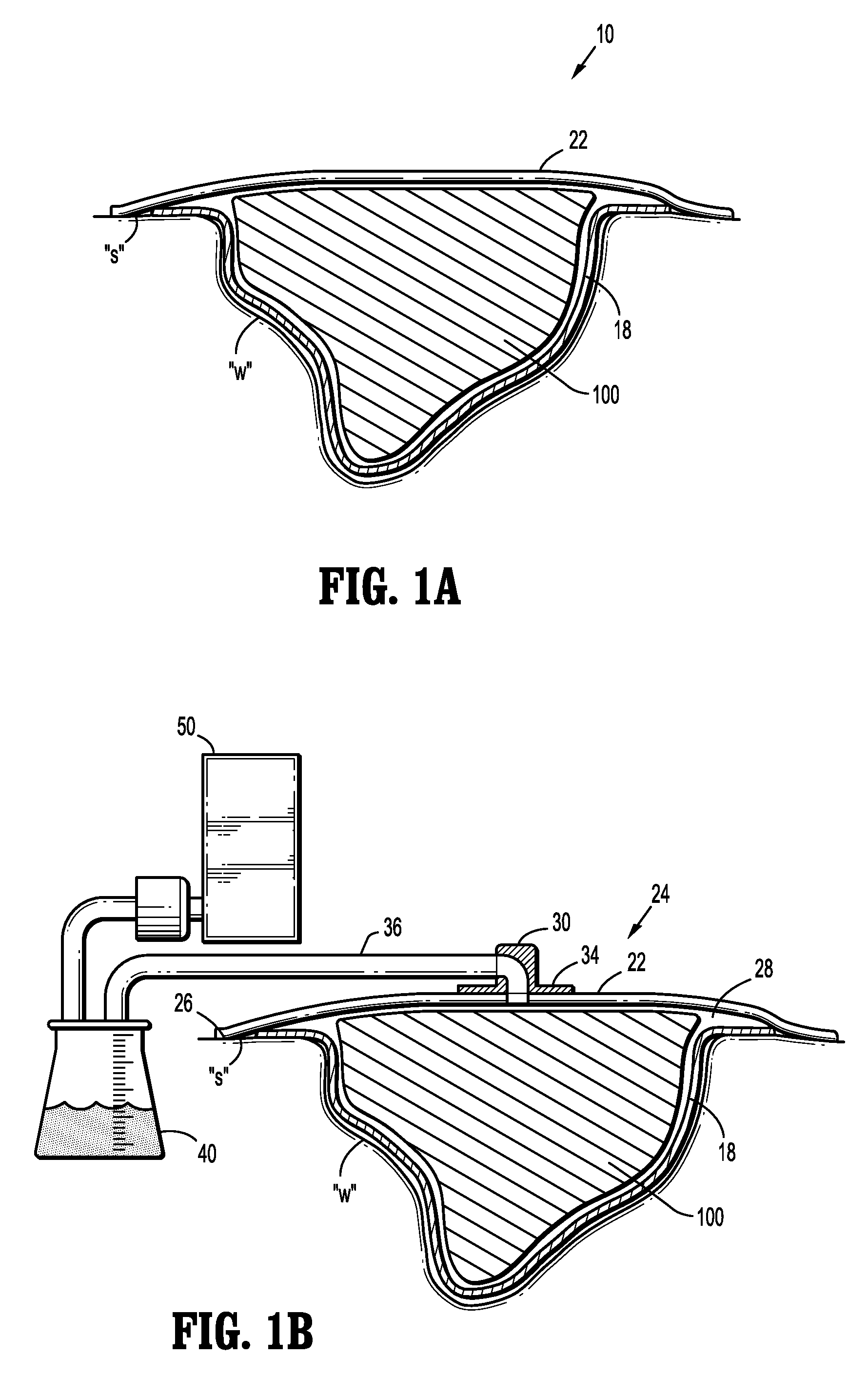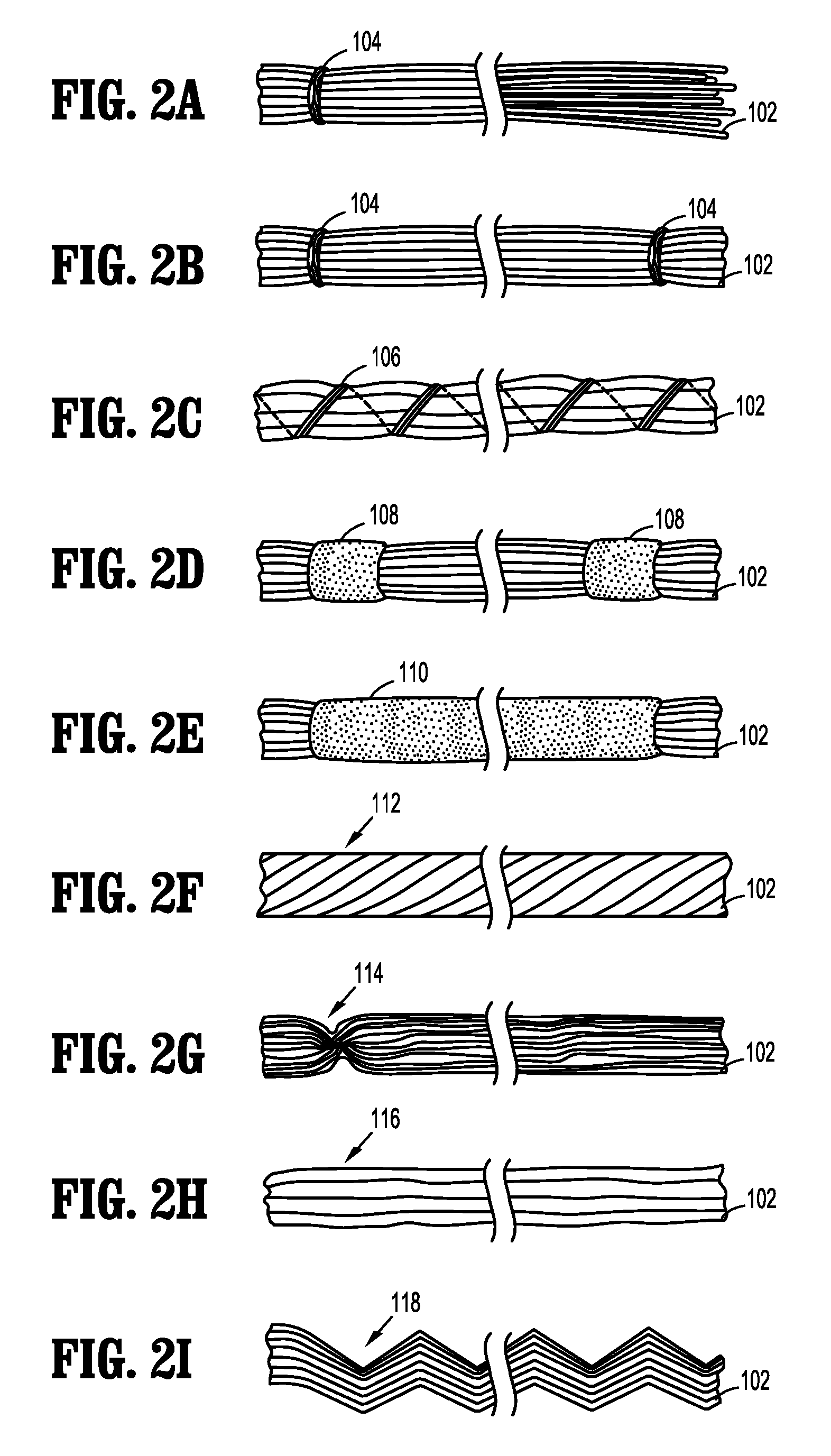Wound Dressing of Continuous Fibers
a continuous fiber and wound technology, applied in the field of wound dressings, can solve the problems of inability to heal naturally, absorbent material, subject to difficulties, etc., and achieve the effect of facilitating placement and removal
- Summary
- Abstract
- Description
- Claims
- Application Information
AI Technical Summary
Benefits of technology
Problems solved by technology
Method used
Image
Examples
Embodiment Construction
[0038]The present disclosure relates to treatment of a wound using a wound dressing comprising a plurality of fibers, each fiber having a length of at least two (2) inches and in one embodiment, at least 4 inches and in other embodiments, at least 6 inches, and at least 8 inches. The method of treatment entails incorporating the wound dressing into a wound to keep the sides of the wound apart, and removing the wound exudate.
[0039]In more detail, the fiber of the wound dressing may be any fiber having a length of at least two (2) inches. Included within the suitable fibers are natural fibers and man-made fibers.
[0040]Examples of suitable fibers are natural fibers produced by plants, animals and / or geologic processes. For example, natural fibers include alginates, chitosan, rayon, vegetable fibers, which may be generated from arrangements of cellulose and bound together by lignin as in cotton, hemp, jute, flax, ramie and sisal, for example. Also, wood fibers are derived from tree sour...
PUM
 Login to View More
Login to View More Abstract
Description
Claims
Application Information
 Login to View More
Login to View More - R&D
- Intellectual Property
- Life Sciences
- Materials
- Tech Scout
- Unparalleled Data Quality
- Higher Quality Content
- 60% Fewer Hallucinations
Browse by: Latest US Patents, China's latest patents, Technical Efficacy Thesaurus, Application Domain, Technology Topic, Popular Technical Reports.
© 2025 PatSnap. All rights reserved.Legal|Privacy policy|Modern Slavery Act Transparency Statement|Sitemap|About US| Contact US: help@patsnap.com



